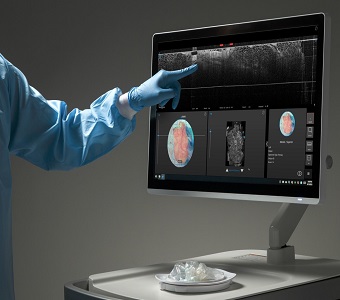PropThink interviewed Dr. CJ Barnum to get his insights on the current state of Alzheimer’s and the neuro-inflammation approach, one of the emerging research strategies. Dr. Barnum is the Director of Neuroscience at INmune Bio and held prior roles at Takeda Pharma’s Medical Affairs in the Neuroscience division. He did his Postdoctoral fellow in Translational Neurology at Emory University.
PropThink: Thank you for joining us, Dr. Barnum. The amyloid thesis has been the center of attention in Alzheimer’s research for the last three decades. The idea being that targeting amyloid, a protein that is thought to be a hallmark of Alzheimer’s disease, will improve cognitive decline. After numerous failures, the industry is now at a dilemma: continue down this amyloid path or start looking elsewhere for a potential treatment. What are your thoughts on the amyloid thesis in general?
Dr. Barnum: I think the data are clear on the amyloid thesis; it hasn’t panned out. There have been over 200 clinical trials testing anti-amyloid drugs. Only one study reported positive results; and many are rightly skeptical. The best hope for these treatments was thought to be in patients with amyloid genetic mutations that lead to Alzheimer’s disease. Unfortunately, it was recently reported that anti-amyloid drugs did not improve cognition in these patients. In many studies, these drugs were able to remove amyloid from the brain, but they did not have an effect on cognition. Additionally, many people have amyloid pathology but never develop Alzheimer’s disease. I cannot imagine how anyone can argue for this hypothesis at this point.
PropThink: Biogen is planning to submit aducanumab, their amyloid drug, to the FDA for potential commercialization sometime in early 2020. Do you see this changing the industry strategies in any way?
Dr. Barnum: If approved, aducanumab will provide a path forward for the approval of other therapies. I don’t think it will impact the types of drugs we develop as much as it will impact how we go about getting an Alzheimer’s drug approved. Companies will use this as a guideline to develop and design trials. Overall, I think potential aducanumab approval will be good for the field, but it will only change the way we approach designing trials. Not necessarily the scientific approaches.
PropThink: Do you see aducanumab approval opening doors to combination therapies?
Dr. Barnum: I hope so. Demonstrating that you can get approval with a single therapy is the first step - trials are too complex and costly to do combination treatments without an approved product. I don’t think there is any doubt that the solution to Alzheimer’s will ultimately be combination therapy. Patients will have a variety of different pathologies built within their disease. As we get better with biological markers, we will better understand the specific pathology of each patient and treat them accordingly. This is what is happening in oncology.
PropThink: Neuro-inflammation is gaining popularity as a potential treatment strategy. However, some view inflammation as part of the brain’s response to repairing itself. How do you know when the amount of inflammation is damaging?
Dr. Barnum: This is the difference between acute and chronic inflammation. Acute inflammation is good, chronic inflammation is bad. Acute inflammation is fast and furious, resolves quickly and for the benefit of the host. Chronic inflammation is a prolonged low-grade inflammatory state that, over time, silently wreaks havoc. If you have chronic inflammation, your immune system is dysfunctional. A dysfunctional immune system is not repairing itself. The ideal treatment will restore normal function to the immune system so it can repair itself. This is not how the current anti-inflammatory drugs work. The current drugs shut down the immune system. They immunosuppress. This stops the chronic inflammation but does not allow for repair. Immunosuppression is very bad for the brain.
We are still determining the best markers that show the most accurate measure of chronic inflammation and immune dysfunction. That said, there are many inflammatory markers that are routinely used in the clinic that do a good job of describing chronic inflammation. For instance, high sensitivity c-reactive protein (hsCRP) is an inflammatory marker often used to aid in identifying infection or describe risk for cardiovascular disease. In the absence of infection, it’s often criticized as being non-specific. This criticism of hsCRP is also the reason it’s one of the more reliable measures of chronic inflammation. Other markers such as erythrocyte sedimentation rate (ESR) might also have utility in describing chronic inflammation.
PropThink: There was an article in the Washington Post (READ HERE) last year discussing Pfizer’s anti-inflammatory drug Enbrel and its potential ability to reduce risk of Alzheimer’s Disease. Can you discuss how you think Pfizer’s approach would have fared.
Dr. Barnum: The article criticized Pfizer for sitting on data that showed Enbrel, a TNF inhibitor, reduced the risk of Alzheimer’s by 64%. The criticism centered on the belief that the scientific community could have advanced this therapeutic mechanism if it only had this information.
This data was already widely available in multiple forms, including a group that published the similar findings from healthcare records in 2016 and a UK group that conducted a small 24-week study that showed Enbrel reduced some non-cognitive symptoms. Scientific advisors determined that the drug did not enter the brain because the molecule is too large to pass through the blood-brain barrier and that direct administration into the brain would produce a better response.
Pfizer made the correct decision not to pursue Alzheimer’s disease. While chronic use of TNF inhibitors may reduce the risk for Alzheimer’s disease, they significantly increase the risk for multiple sclerosis. Essentially, you cannot put this class of drug, called a TNF inhibitor, in the brain. This is why I believe that Pfizer did not pursue further development.
PropThink: Tell us a little bit about TNF, TNF-inhibitors and their role in the inflammatory pathway.
Dr. Barnum: TNF is a potent inflammatory cytokine that sits on the apex of the inflammatory cascade. TNF inhibitors are the most successful class of drugs and are used to treat a variety of inflammatory diseases such as arthritis, gastrointestinal disease, and psoriasis.
TNF has two ligands, trans-membrane TNF and soluble TNF. Their activities of these ligands are so different that they should not share the same name.
Trans-membrane TNF is the “good” TNF, it provides neuroprotection, facilitates repair, and supports the immune system. Soluble TNF is the “bad” TNF, and is responsible for driving immune dysfunction, chronic inflammation, and inducing cell death. All currently available TNF inhibitors like Pfizer’s Enbrel and Abbvie’s Humira block both the “good” and “bad” TNF. Blocking the “good” TNF results in immunosuppression and the side effects associated with TNF drugs, including increased risk for infection, cancer, and multiple sclerosis.
In order to effectively treat neurologic disease, next generation TNF inhibitors will need to selectively block the “bad” soluble TNF while preserving the “good” trans-membrane TNF.
PropThink: If non-selective TNF inhibitors are too large to pass the blood-brain barrier, like in the case of Pfizer’s Enbrel, how are they having an effect on Alzheimer’s Disease?
Dr. Barnum: The immune system has a very sophisticated system for communicating with the brain. This bi-directional communication is not dependent on molecules “getting” into the brain in the classic sense. There are multiple mechanisms that allow a signal in the periphery to be transmitted to the central nervous system and the brain. That means that you can enact changes in the brain by changing the immune system outside of the brain. In the case with Alzheimer’s, the reduction in peripheral inflammation by non-selective TNF inhibitors also reduces inflammation in the brain.
PropThink: How is INmune Bio’s biologic that you are working on different from the non-selective TNF inhibitors?
Dr. Barnum: The non-selective TNF inhibitors block both the “good” and “bad” TNF. XPro1595 is a next generation TNF inhibitor that selectively neutralizes the “bad” TNF - soluble TNF. This drug candidate does not block, or in any way interfere with the “good” TNF; trans-membrane TNF. As a result, XPro1595 stops chronic inflammation and facilitates neuroprotection and repair.
PropThink: Can you explain why inhibiting soluble TNF is a better method than targeting TNF-receptor #1?
Dr. Barnum: The dogma is that TNFR1 is the “bad” receptor and TNFR2 is the “good” receptor. This is because soluble TNF preferentially binds to TNFR1 whereas trans-membrane TNF preferentially binds to TNFR2.
However, there are examples where targeting the receptor has produced the opposite effect. The effect appears to be tissue and or context dependent. There are regions of the brain where either receptor may not be expressed at high levels. Occasionally I will come across a paper that reports a novel, unexpected effect of targeting a TNFR. I suspect this is why TNF-receptor targeting compounds have not advanced clinically despite being around for a while.
What is clear is that the TNF ligands like trans-membrane TNF and soluble TNF dictate the downstream response, not the receptors. Therefore, our thesis is that inhibiting the bad soluble TNF will offer superior results and coverage in all cases.
PropThink: Precision medicine is being discussed quite a bit in Alzheimer’s as a diagnostic tool to make studies more efficient through use of biomarkers. How do you see precision medicine playing a role in future of disease?
Dr. Barnum: In the current environment, there isn’t much utilization of biomarkers. Amyloid levels are occasionally being used as a biomarker, but that is not really a biomarker because it describes the disease. If there is no amyloid, you don’t have Alzheimer’s but rather dementia.
If you want to know which patient will most likely respond to your treatment, there should be evidence that the patient disease is aligned with the mechanism of your treatment. For example, if you’re developing a drug to target metabolic dysfunction, there should be some biomarker or biological evidence that the patient has metabolic dysfunction.
The challenge in Alzheimer’s and neurologic diseases more broadly is how do we measure the biology in the living brain. While we are in very early stages, it is a priority within the field to identifying biomarkers and developing tools. In some cases, we are further along than others. For example, measuring blood levels of inflammation can reflect what is happening in the brain.
In the future, I think trials will be aligning a drug’s mechanism with the pathology of the patient. So that only the patients with the pathology are treated in that study. Theoretically, this should make trials more efficient as it will result in screening out unsuitable patients early, yield greater responses and faster approvals.
PropThink: INmune Bio is conducting a Phase 1 biomarker-directed study looking at several inflammation biomarkers. How will these biomarkers translate to the Alzheimer’s pathology?
Dr. Barnum: We view Alzheimer’s as a product of a dysfunctional immune system, so we are looking for evidence of immune dysfunction. In our Phase 1 trial, we’re using biomarkers as enrolment criteria and following the changes in these biomarkers.
For instance, we will measure levels of the inflammatory biomarker high sensitivity c-reactive protein (hs-CRP). Hs-CRP is an inflammatory biomarker elevated in the blood of some Alzheimer's patients and elevated levels have been shown to predict response to TNF inhibitors in multiple other diseases.
Using the changes in biomarkers, we will try to understand how the immune system is being affected and the ability of our drug candidate XPro1595 to reduce inflammation. We want to show that we can reduce inflammation in both the periphery and the brain. Additionally, we want to understand how the different inflammatory factors are changing over time and use these trends to design a potential Phase 2 in a way that will position company to report a meaningful response.
PropThink: Thanks for your time, Dr. Barnum. Very insightful.
Access This Content Now
Sign Up Now!




